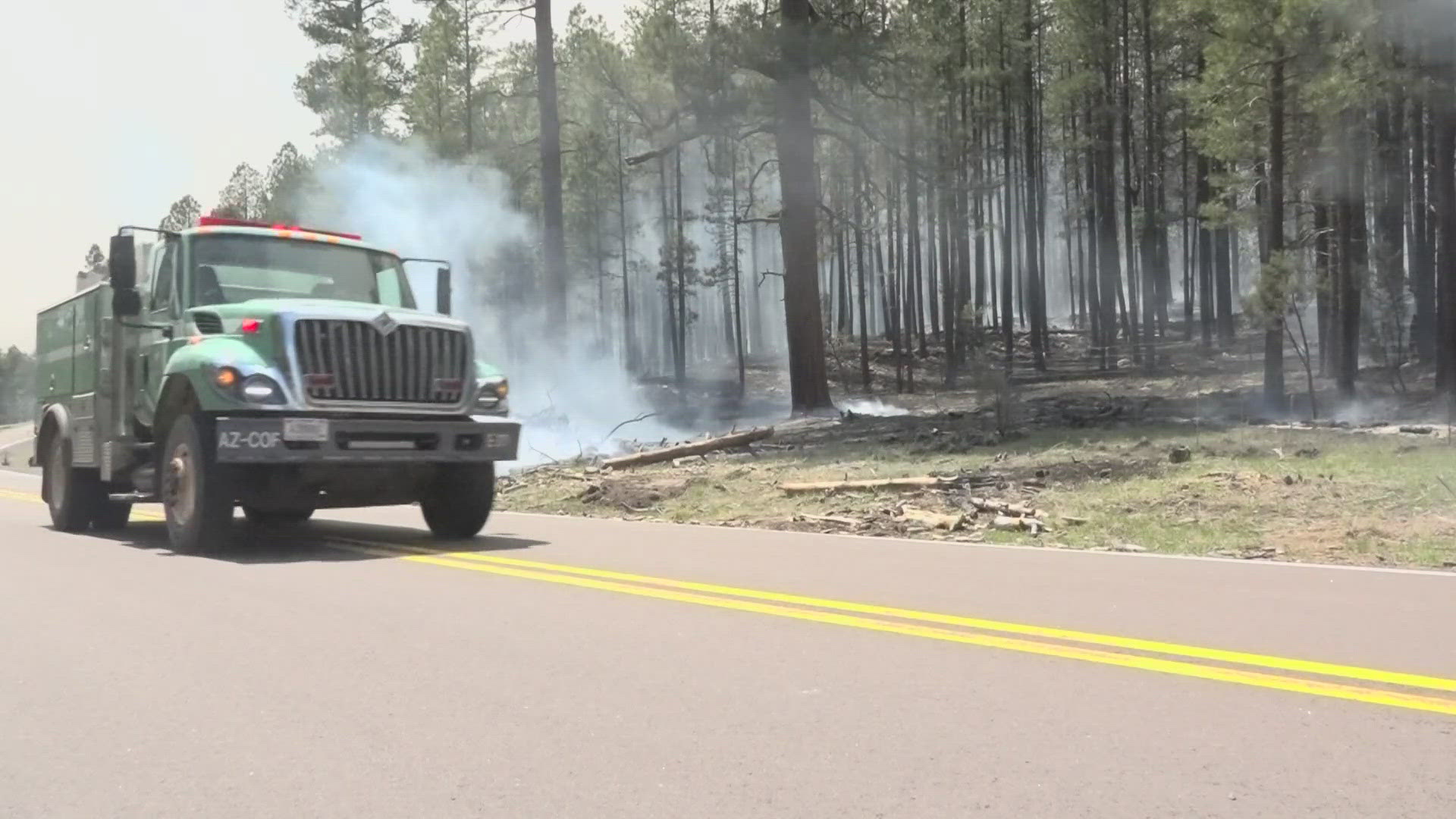FLAGSTAFF, Ariz. — One meter. One minute.
Those are the metrics NAU professor Allie Shenkin believes will define a wildfire detection system of the future.
Shenkin and his colleagues hope to launch a constellation of 90 mini-satellites with the capability to detect a forest fire as small as one meter in diameter, within the span of one minute.
“The system would pass that information onto authorities in an understandable way, so they can decide if the fire would be a problem or if it is in a good place to burn,” Shenkin said.
Shenkin is part of a team of Flagstaff-based engineers, scientists and firefighters called “Team Snuffed.” They are finalists in the global XPrize Wildfire space-based competition to be decided next year. In the meantime they are trying to leverage investments from the private sector or governments.
“If you consider the billions of dollars in losses every year in those regions alone, if you’re an insurance company or a federal agency like FEMA, that ($100 million) is not a lot of money,” said professor David Trilling.
The NAU team believes they have an advantage. University engineers designed and built a $350,000 dual optical infrared camera that will be sent on a Mars mission later this year. “Team Snuffed” proposes replicating 90 of the cameras to be mounted on 90 satellites at a total cost of about $100 million.
The mini-satellites would travel in low orbit over the western U.S., western Canada and Alaska within one minute of each other.
“The technology is here. These cameras weigh just about one pound. We’re ready to go,” Trilling said.
NASA began using the FIRMS satellite system to detect wildfires in 2022. Challenges remain in getting precise data into the hands of foresters quickly.
“The satellites used right now produce images that are still very coarse,” said True Brown of the Coconino National Forest.
Brown says the Forest Service relies heavily on the public and lookout towers to detect wildfires. That can take hours.
“The more real time data we have is crucial to make sound, risk management decisions,” Brown said.
Shenkin and Trilling say the biggest challenge ahead is not technical.
“I would say financial ingenuity is the biggest obstacle,” Shenkin said.
Up to Speed
Catch up on the latest news and stories on the 12News YouTube channel. Subscribe today.

